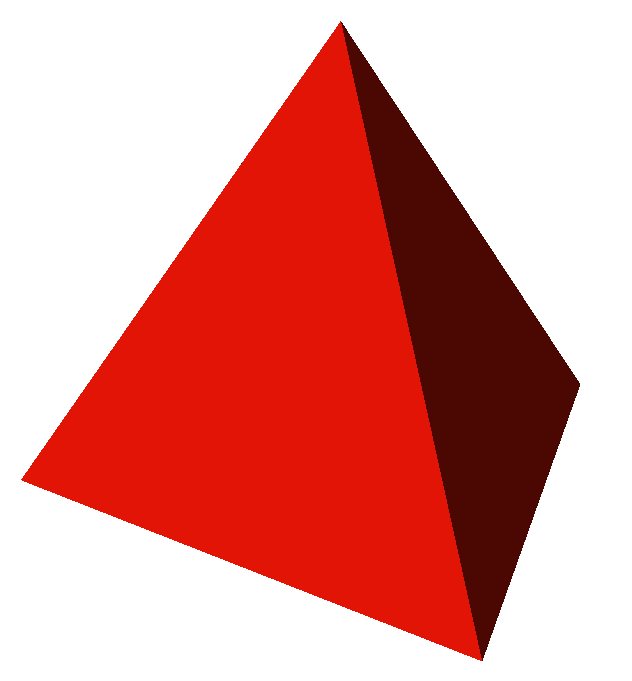|
Alternated Hexagonal Tiling Honeycomb
In three-dimensional hyperbolic geometry, the alternated hexagonal tiling honeycomb, h, or , is a semiregular polytope, semiregular tessellation with tetrahedron and triangular tiling cells arranged in an octahedron vertex figure. It is named after its construction, as an Alternation (geometry), alteration of a hexagonal tiling honeycomb. Symmetry constructions It has five alternated constructions from reflectional Coxeter groups all with four mirrors and only the first being regular: [6,3,3], [3,6,3], [6,3,6], [6,3[3 and [3[3,3 , having 1, 4, 6, 12 and 24 times Paracompact_uniform_honeycomb#Enumeration, larger fundamental domains respectively. In Coxeter notation subgroup markups, they are related as: [6,(3,3)*] (remove 3 mirrors, index 24 subgroup); [3,6,3*] or [3*,6,3] (remove 2 mirrors, index 6 subgroup); [1+,6,3,6,1+] (remove two orthogonal mirrors, index 4 subgroup); all of these are isomorphic to [3[3,3. The ringed Coxeter diagrams are , , , and , representing diffe ... [...More Info...] [...Related Items...] OR: [Wikipedia] [Google] [Baidu] |
Paracompact Uniform Honeycomb
In geometry, uniform honeycombs in hyperbolic space are tessellations of convex uniform polyhedron Cell (geometry), cells. In 3-dimensional hyperbolic space there are 23 Coxeter group families of Coxeter diagram#Paracompact (Koszul simplex groups), paracompact uniform honeycombs, generated as Wythoff constructions, and represented by ring permutations of the Coxeter diagrams for each family. These families can produce uniform honeycombs with infinite or unbounded Facet (geometry), facets or vertex figure, including ideal vertex, ideal vertices at infinity, similar to the Uniform tilings in hyperbolic plane#Ideal triangle domains, hyperbolic uniform tilings in 2-dimensions. Regular paracompact honeycombs Of the uniform paracompact H3 honeycombs, 11 are Honeycomb (geometry)#Uniform honeycombs, regular, meaning that their group of symmetries acts transitively on their flags. These have Schläfli symbol , , , , , , , , , , and , and are shown below. Four have finite Ideal_polyhedron ... [...More Info...] [...Related Items...] OR: [Wikipedia] [Google] [Baidu] |

